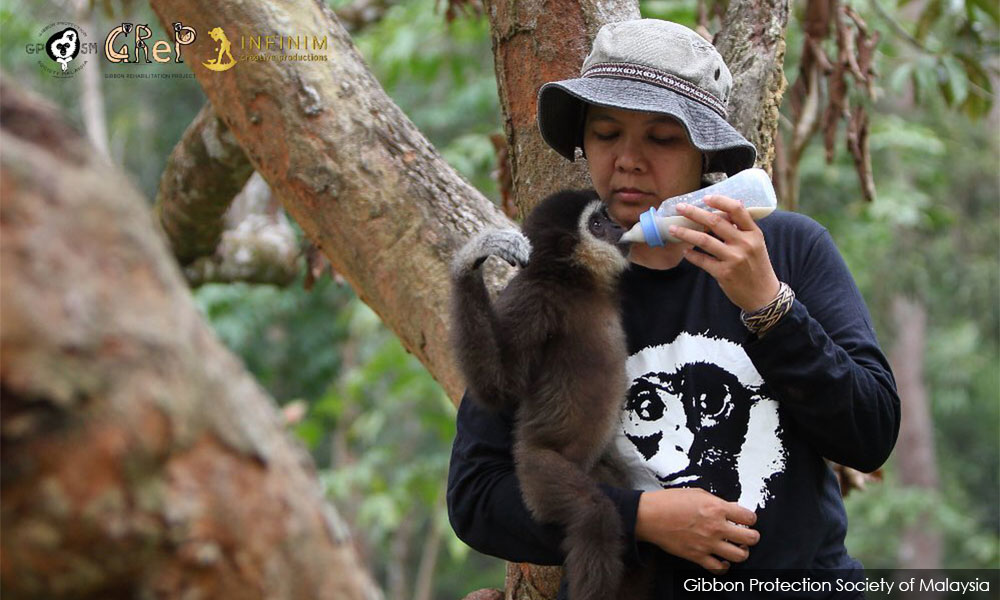LETTER | It may be uncommon for us celebrities to talk about conservation and our concern for wildlife, but I believe it is high time for us to start using our voices to speak for the voiceless animals.
Over the past few years, I’ve had the honour to get involved with several NGOs which have opened my eyes to the challenges faced by our wildlife and those protecting it. In my first letter to the editor, I would like to discuss the importance of wildlife rehabilitation in our country that we all love so dearly.
Day by day we are losing more of our valuable primates due to human actions. With trends of habitat destruction, forest fragmentation and illegal wildlife trade, can their population be saved from extinction?
One solution to this problem is wildlife rehabilitation, something our country majorly lacks.
Rehabilitation is the process of helping a wild animal that has been taken out of its natural world, to readapt to the wild again (rewilding). For some species it’s simple, for others it can be very complex. Each species needs its own expert to handle the process.
Without proper rehabilitation, the majority of wildlife that are released will die. They do not know how to survive, they may not know how to find food, how to secure a territory, how to defend themselves or even know what a natural predator looks like.
Their exposure to humans has caused them to lose all their natural instincts. But if rehabilitation is done properly, this can be overcome.
Let’s take gibbons for example. Did you know that it can take anywhere from five to 15 years to rehabilitate one individual? Crazy isn’t it? Gibbons are endangered mainly because of the booming illegal pet trade where they are bought and sold (often on social media) because they are cute and human-like.
But behind all that cuteness is a devastating story. They are ripped from their mother’s embrace when they are infants and endure watching their entire family killed, they are then transported in boxes by bus cargo and lorries like objects.
As pets, they are made to participate in unnatural activities like wearing clothes and staying up late into the night and are scolded, if not abused, when they show their natural instincts like swinging around or play biting. All of this traumatises them so much that they need intensive mental care to regain their confidence.
Proper rehabilitation can soothe their trauma and help them regain their natural instincts. When done correctly, each gibbon would need to pass seven tests or criteria to prove their readiness for the wild.
As they are highly social and family-orientated animals, eventually the gibbons have to be released as a mating pair with a child (gibbons mate for life). Getting them from traumatised former pets to being able to parent a young gibbon is a long journey.

Wildlife rehabilitation started in houses of compassionate individuals and then began to become organised in 1939 with the first rehabilitation centre founded in River Forest, Illinois, US.
Gibbon rehabilitation was started in 1992 in Thailand by the Gibbon Rehabilitation Project or GRP. It took about 10 years for them to release their first gibbon.
For many years Malaysia was the only country without a rehabilitation programme. Sadly, the only one we do have is not getting the support it needs in Peninsular Malaysia.
The Gibbon Conservation Society (GSC), founded by local-born Mariani Ramli when she was in her mere early 20s, is an organisation that works very hard to help our Malaysian small apes.
Recently, they have shared the complexities of rehabilitation on their social media pages which I highly suggest you follow them to know more.
I hope that we as a country can support the efforts done by small NGOs like this in caring for our wildlife.
Not all of us have the patience and dedication to do the job, but I think we can all show our support in one way or another.
If you are financially able, the pandemic has affected GCS’s fundraising avenues. Every little bit makes a difference.
For those who have wildlife as pets, please send them for rehabilitation, if you have a gibbon, send him or her to GCS.
Lastly, and maybe the most important, is to lend your voice to the cause like I have and share awareness for our gibbons and for all our wildlife so that they may have a better future.
The writer is a mother, actress and conservation advocate.
The views expressed here are those of the author/contributor and do not necessarily represent the views of Malaysiakini.

